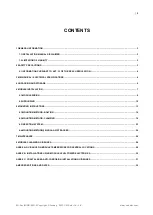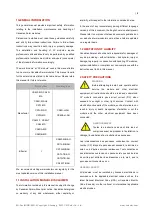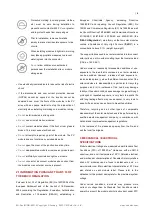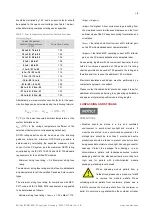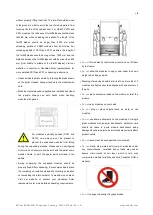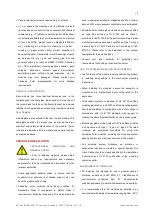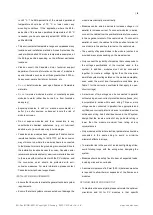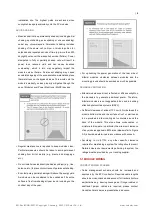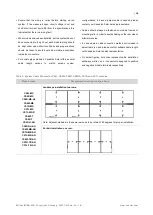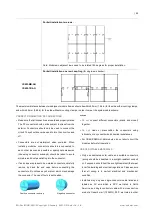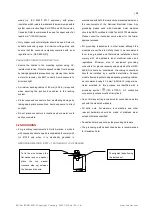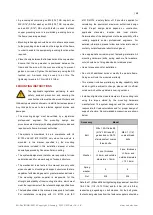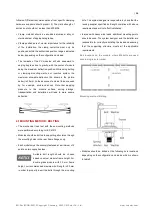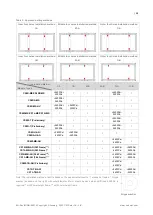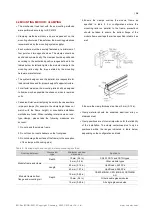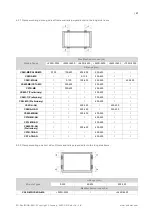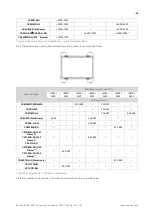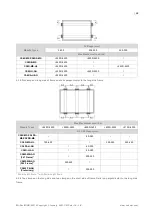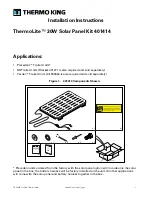
| 4
EN-Rev IM/GN-EN/1.0 Copyright © January, 2023. CSI Solar Co., Ltd.
Protective clothing (non-slip gloves, clothes,
etc.) must be worn during installation to
prevent direct contact with 30 V
DC
or greater,
and to protect hands from sharp edges.
Prior to installation, remove all metallic
jewelry to prevent accidental exposure to live
circuits.
When installing modules in light rain, morning
dew, take appropriate measures to prevent
water ingress into the connector.
Do not
allow children or unauthorized
persons near the installation site or module
storage area.
Use electrically insulated tools to reduce the risk of electric
shock.
If the disconnects and over current protection devices
(OCPDs) cannot be opened or the inverter cannot be
powered down, cover the fronts of the modules in the PV
array with an opaque material to stop the production of
electricity when installing or working on a module or wiring.
Do not
install modules in strong wind.
Do not
use or install broken modules.
Do not
contact module surface if the front or rear glass is
broken. This may cause electric shock.
Do not
attempt to repair any part of the module. The PV
module does not contain any serviceable parts.
Do not
open the cover of the junction box at any time.
Do not
disassemble a module or remove any module part.
Do not
artificially concentrate sunlight on a module.
Do not
connect or disconnect modules when current from
the modules or an external source is present.
2.1 INFORMATION PURSUANT TO ART. 33 OF
THE REACH REGULATION
Pursuant to Art. 33 of Regulation (EC) No 1907/2006 of the
European Parliament and of the Council of 18 December
2006 concerning the Registration, Evaluation, Authorisation
and Restriction of Chemicals (REACH), establishing a
European
Chemicals
Agency,
amending
Directive
1999/45/EC and repealing Council Regulation (EEC) No
793/93 and Commission Regulation (EC) No 1488/94 as well
as Council Directive 76/769/EEC and Commission Directives
91/155/EEC, 93/67/EEC, 93/105/EC and 2000/21/EC (the
“
REACH Regulation
”), we inform you that our solar modules
contain a Substance of Very High Concern (“
SVHC
”) in a
concentration above 0.1 % (weight by weight).
The copper ribbons used in our solar modules to interconnect
solar cells use a thin solder coating layer that contains lead
(CAS no. 7439-92-1).
Under normal or reasonably foreseeable conditions of use,
exposure to the lead that is contained in our solar modules
can be excluded. However, a release of, and exposure to,
lead can take place (i) when the different components of the
solar modules are disassembled, in particular for recycling
purposes, and (ii) in instances of fire. Lead may damage
fertility or the unborn child, causes damage to organs through
prolonged or repeated exposure, is very toxic to aquatic life
with long lasting effects, may cause cancer, is very toxic to
aquatic life, and may cause harm to breast-fed children.
Therefore, recycling and all other types of comparable
disassembly of the solar modules have to be performed by a
qualified waste management company, in compliance with
national and local waste management regulations.
In the instance of fire, please keep away from the fire, and
call the local fire brigade.
3 MECHANICAL / ELECTRICAL
SPECIFICATIONS
Module electrical ratings are measured under Standard Test
Conditions (STC) of 1000 W/m
2
irradiance, with an AM1.5
spectrum, and a cell temperature of 25°C. Detailed electrical
and mechanical characteristics of Canadian Solar crystalline
silicon PV modules can be found in datasheets, and on
www.csisolar.com. Main electrical characteristics at STC are
also stated on each module label. Please refer to the
datasheet or the product nameplate for the maximum system
voltage.
Under certain conditions, a module may produce more
current or voltage than its Standard Test Conditions rated
power. As a result, the module short-circuit current under STC


